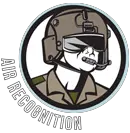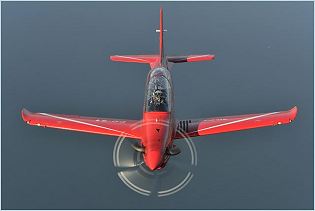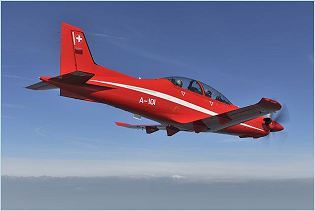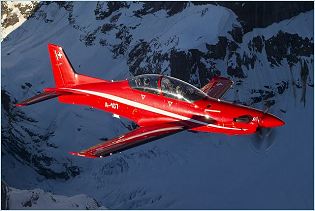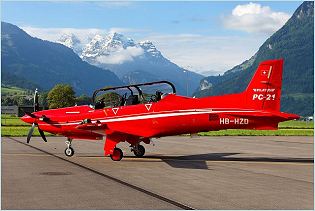| |
||||||||||||||||||||||
| a | ||||||||||||||||||||||
PC-21
Pilatus turboprop advanced trainer aircraft |
||||||||||||||||||||||
 |
||||||||||||||||||||||
| |
||||||||||||||||||||||
The
Pilatus PC-21 is a turboprop advanced trainer aircraft designed and
manufactured by Pilatus Aircraft of Switzerland. Development of the
PC-21 started in January 1999. Roll-out of the PC-21 prototype was on
30 April 2002 at Pilatus' factory in Stans, Switzerland, with the first
flight taking place on 1 July of the same year. The second PC-21 prototype
flew on 7 June 2004. With air force budgets getting tighter, the all-new
PC-21 provides a low-cost but highly effective training platform for
pilots destined to fly jet fighters, without actually requiring them
to fly jets until much later in the program. The PC-21 far surpasses
all other turboprop trainers in terms of aerodynamic performance, cockpit
equipment, flexibility and ease of maintenance. The use of state-of-the-art
technologies increases both the efficiency and quality of training.
Six PC-21 have been delivered to the Swiss Air Force, the first four
being delivered in April 2008. In December 2010, the Swiss air force
ordered another two. On 21 January 2008, the first PC-21 for the Republic
of Singapore Air Force completed its flight test prior to being accepted
into service. In 2009, UAE announced an order of 25 PC-21 for the United
Arab Emirates Air Force to replace their aging fleet of Pilatus PC-7s.
In 2012, the Royal Saudi Air Force (55 aircraft) and the Qatar Emiri
Air Force (24 aircraft) have opted for the PC-21. |
||||||||||||||||||||||
| Main Variants: | ||||||||||||||||||||||
-
|
||||||||||||||||||||||
| Technical Data | ||||||||||||||||||||||
| Design | ||||||||||||||||||||||
The
PC-21 is a completely new aircraft design The aircraft features a tandem-seating
arrangement (student in-front/instructor behind) in a bird strike resistant
glass canopy with all round vision glass cockpit. |
||||||||||||||||||||||
| Avionics and equipment | ||||||||||||||||||||||
Systems
integration is at the core of the PC-21 cockpit design philosophy. As
an advanced aircraft, the cockpit display and control system are configured
closely to the concept of the latest generation front-line aircraft
which are characterised by a greatly increased pilot workload. Equipped
with zero/zero ejection seats, a pressurised tandem cockpit, air-conditioning,
an anti-g system and On-Board Oxygen Generating System (OBOGS), the
PC-21 provides a comfortable, safe training environment. The PC-21 avionics
system is a Pilatus design and there is no reliance on third-party integrators
or exposure to state controls. Pilatus has used modern avionics standards
and an open-system architecture to allow training system designers much
greater scope for innovation, adaptation and change. |
||||||||||||||||||||||
| Propulsion | ||||||||||||||||||||||
The PC-21 is powered by a 1600 shp PT6A-68B engine from Pratt &
Whitney Canada which pushes the speed and climb rate of the turboprop
into an area that, until now, was exclusively jet territory. The engine
is coupled to a five-blade Scimitar graphite propeller made by Hartzell.A
digital power management system and automatic yaw compensation make
the PC-21 easy to fly at low speed and in the circuit, while providing
the performance required for advanced training. The PC-21 is capable
of sustained low-level speeds in excess of 323 knots (598 km/h); hydraulically-assisted
ailerons and roll spoilers produce fighter-like rates of roll in excess
of 200° per second. |
||||||||||||||||||||||
| Mission capabilities | ||||||||||||||||||||||
The
capabilities of the PC-21 make its ideally suited to a very wide training
envelope. It can be used from day one in the training system eliminating
the need for an elementary flying training fleet but also bridges the
performance gap between traditional Turboprop trainers and expensive
leading fighters. The PC-21 therefore provides significant advantages
over traditional Turboprops and jet trainers. The technology used in
the PC-21 is optimized to provide the most flexible training system
in the world. The PC-21 can be equipped with four hardpoints under-wing
which can be armed with up to 1,150 kg (2,500 lb) of payload of air-to-ground
weapons to operate in the Counter-insurgency role. |
||||||||||||||||||||||
| Specifications | ||||||||||||||||||||||
|
||||||||||||||||||||||
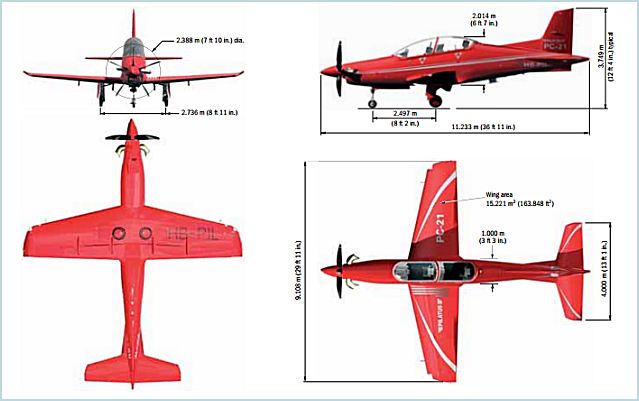 |
||||||||||||||||||||||
|
||||||||||||||||||||||
PC-21 Pilatus turboprop advanced trainer cargo aircraft technical data sheet specifications intelligence description information identification pictures photos images video Switzerland Swiss Air Force aviation aerospace defence industry technology
- Posted On
